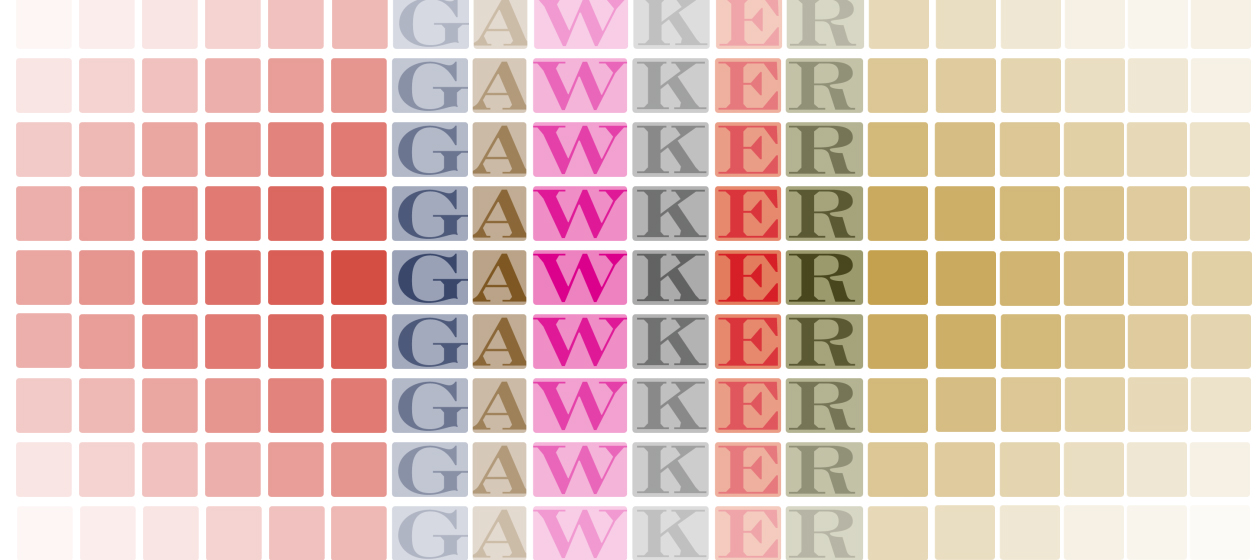What I'll miss about Gawker
A tribute to the website everyone read and loved to hate


After it ceases publication next week, Gawker.com will be remembered as the maturing internet's greatest interpreter.
Vicious and nosy, dismissive and brash, Gawker defined mean. It defined cool. It scorned your Facebook friends long before you really "got" Facebook — it was good at scorn — and whenever it articulated something about the present (with all its embarrassing platforms), it offered cultural acumen in writerly bedhead.
Gawker didn't care if you liked it. It was messy and blasé and — even at its angriest — slightly amused. It elevated the tabloid and punched holes in a hermetic media industry. It reported on our public figures' worst habits, doxed trolls, and gossiped about itself. And did it all so casually that you never suspected there were standards, or that they were being upheld, until other news outlets started picking up their stories.
Subscribe to The Week
Escape your echo chamber. Get the facts behind the news, plus analysis from multiple perspectives.

Sign up for The Week's Free Newsletters
From our morning news briefing to a weekly Good News Newsletter, get the best of The Week delivered directly to your inbox.
From our morning news briefing to a weekly Good News Newsletter, get the best of The Week delivered directly to your inbox.
Most of all, though, Gawker developed a form of journalism that privileged transparency — especially when it comes to reportorial sausage-making — and voice. Gawker posts could be absurdly detailed investigations into Taylor Swift's feud with Katy Perry or 60-word throwaways, but they were always coming from someone — a snarky soul with peculiar enthusiasms they were encouraged to chase. There was no neutral register on Gawker. That made it the site everyone read and everyone loved to hate.
That unmistakable Gawker tone — which felt personal and should not to be confused with anything so boring as an agenda — worked because good writers become great when they get to cover trash and truth. You could go to Gawker and read Caity Weaver puzzling over Bradley Cooper's nipples or Richard Lawson recapping The Real Housewives of Beverly Hills or William Arkin's interview with a veteran intelligence officer on what's happening with ISIS and Iraq.
Gawker was where we laughed at Craigslist weirdos and learned about societal problems we didn't know we had, like the problem of incarcerating a female teen killer or the sad epidemic of Craigslist ghostwriters.
This is not a hagiography. An enterprise like this one will jump from one controversy or another, and Gawker has been wrong a lot. But the outrage the site inspires these days should itself be understood as an indication of how much the internet has changed — and how we have changed with it.
A free daily email with the biggest news stories of the day – and the best features from TheWeek.com
The controversy Gawker courted recently is nothing compared to its merciless early days, when it went after people (many of them private figures) with a level of vitriol it's never really matched. The infamous Gawker Stalker map was a symbol, back then, of the site's danger: It was mean and young and — even back then — worryingly well-sourced. The stuff it printed was true.
So were the fights the site had with itself. Gawker is uniquely representative of the internet in a way no one else is: Cruel but insightful, it was also painfully transparent. The site gave readers access to its dirty laundry and a crash course in how rumor-mongering works behind the scenes. Maureen O'Connor's "How to sell a gay sex story to the National Enquirer" story wasn't about John Travolta, it was about the tipster and the process of getting a story into Enquirer and TMZ. Her goodbye post was a list of tips people sent her. And when she chose to criticize aggregation — specifically a "self-aggregator," a writer who wrote the same basic story for two different publications — she did so via an absurdist meta piece about aggregation that reproduced the piece in full.
What really made the site Gawker was what happened in the comments. Co-founder and CEO Nick Denton took issue with O'Connor's take by praising the original:
[[{"type":"media","view_mode":"media_large","fid":"164393","attributes":{"alt":"","class":"media-image","height":"505","typeof":"foaf:Image","width":"600"}}]]
And if you click on the link for that comment, it turns into an argument between Denton and AJ Daulerio. Gawker has gone through countless changes, but this penchant for showing readers editorial fights remained constant. Sometimes that material got semi-formalized into Gawker sub-blogs like TKTK or Sausage, but that kind of man-behind-the-curtain "here's how we work" stuff has always been Gawker's bread and butter, dating back to its earliest days. (Here's Doree Shafrir emailing with Lockhart Steele about what Gawker should be doing in re: black dildo pics.)
That penchant for transparency extended to the comments. Readers could watch commenters rise and become writers (I remember when Hamilton Nolan, Ryan Tate, and Gabriel Delahaye were Gawker commenters and Richard Lawson was still lolcait.) Before its recent, more corporate incarnation, Gawker maintained a friendly (if authoritarian) relationship with its commentariat that extended almost to a kind of political strategy: Ryan Tate got a job there after tearing apart the site's job posting. Per Denton, Tate did this "so viciously and so skillfully that I wanted him on my team." What's more, if a commenter said she had information about something in the article, writers frequently asked them to email them.
Through this grass-roots approach to content, this principle of incorporating commenters and tipsters and crowdsourcing the truth from those in the know, Gawker became a place I went to for "the real story." (Dayna Evans was terrific at this: take this brutal, well-researched introduction to the Duggar-like Bates Family, or her investigation into whether James Franco's "scandal" with a teenager was a publicity stunt.)
Primary sources made the site uniquely valuable in other ways, too. Hamilton Nolan's series of letters — from inmates on Death Row, or adjunct professors, or Amazon workers, or people living "on the dole"— is the closest thing we have to the kind of stuff Studs Terkel was doing. Because they're letters, they don't conform especially well to a single point: This post, for instance, contains a letter from a young mother on what it's like to raise a special needs child on public assistance, but it also features a letter from someone whose siblings use public assistance in ways it wasn't intended — like exchanging cards for cash. That's what made this series valuable: It came from actual people.
Gawker featured first-person accounts in more polished forms too: Kiese Laymon's Saturday series included essays like Linda Chavers' "This is what happens" about her MS diagnosis or Regina N. Bradley's "Confessions of a recovering black debutante."
From a purely journalistic point of view, Gawker's greatest achievement was its longform, some instances of which were just unbelievably good. (So good they sometimes hurt the site: Adrian Chen's investigation of Violentacrez, one of Reddit's most virulent trolls, resulted in Reddit banning all links to Gawker.) Nitasha Tiku's riveting report on San Francisco's "clit cult" was a mind-bending tour of Silicon Valley's take on optimized eroticism, and everything Camille Dodero wrote for the site was upsettingly good. My personal favorites are her report "The princess and the trolls," a profile of the most hated 6-year-old on the planet and a meditation on the internet's cruelty, and her profile of a would-be school shooter arrested before he had the chance. Leighton Woodhouse's report on how the LAPD has reformed 50 years after the riots by implementing the surprisingly successful Community Safety Partnership program remains a formidable piece of journalism.
These pieces, it should be said, were part of a more elegant and more aspirational Gawker. Not the Gawker of the last few months, which has seemed hamstrung by Denton's mandate that it be "20 percent nicer" and cover politics when too many other sites do it better, but a Gawker that remained a free radical while harboring some larger ambitions. That version of the site did not survive the post that outed a Conde Nast CFO.
That crisis and the editorial changes that followed it did almost as much as the Peter Thiel-funded Hulk Hogan lawsuit to illustrate that what made Gawker great also made it vulnerable. In a word: money. (And an internet that's become increasingly responsive to it.) Gawker was able to be what it was because it existed at the whim of an eccentric millionaire, not beholden to corporate interests, who was interested in what journalism could be. It was only a matter of time, perhaps, before other eccentric billionaires (like Peter Thiel and Frank VanderSloot) would come along who were more interested in what it couldn't.
That Thiel succeeded in destroying Gawker by secretly funding Hulk Hogan's lawsuit is a serious sign in a media landscape that's already lost most of its biodiversity. But Gawker's closure is a loss for its own sake. And ours.
Lili Loofbourow is the culture critic at TheWeek.com. She's also a special correspondent for the Los Angeles Review of Books and an editor for Beyond Criticism, a Bloomsbury Academic series dedicated to formally experimental criticism. Her writing has appeared in a variety of venues including The Guardian, Salon, The New York Times Magazine, The New Republic, and Slate.
-
 Jasveen Sangha and the ketamine 'Wild West' of Hollywood
Jasveen Sangha and the ketamine 'Wild West' of HollywoodIn The Spotlight Arrest of the 'ketamine queen' accused of supplying Friends star Matthew Perry with deadly dose has turned spotlight on a showbiz drug problem
-
 Confessions of a Brain Surgeon: an 'exceptional' documentary
Confessions of a Brain Surgeon: an 'exceptional' documentaryThe Week Recommends Retired neurosurgeon Henry Marsh reflects on his pioneering work with exquisitely 'raw honesty'
-
 A new subtype of diabetes was found and it may require different treatment
A new subtype of diabetes was found and it may require different treatmentUnder the radar It is prevalent in Black Africans and Americans
